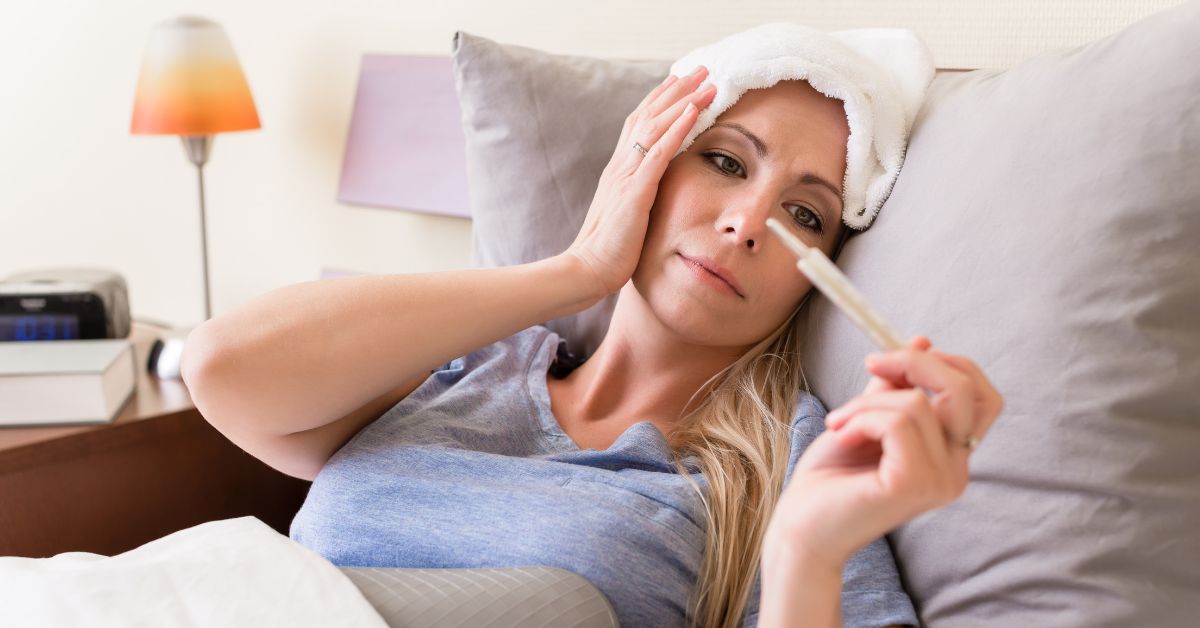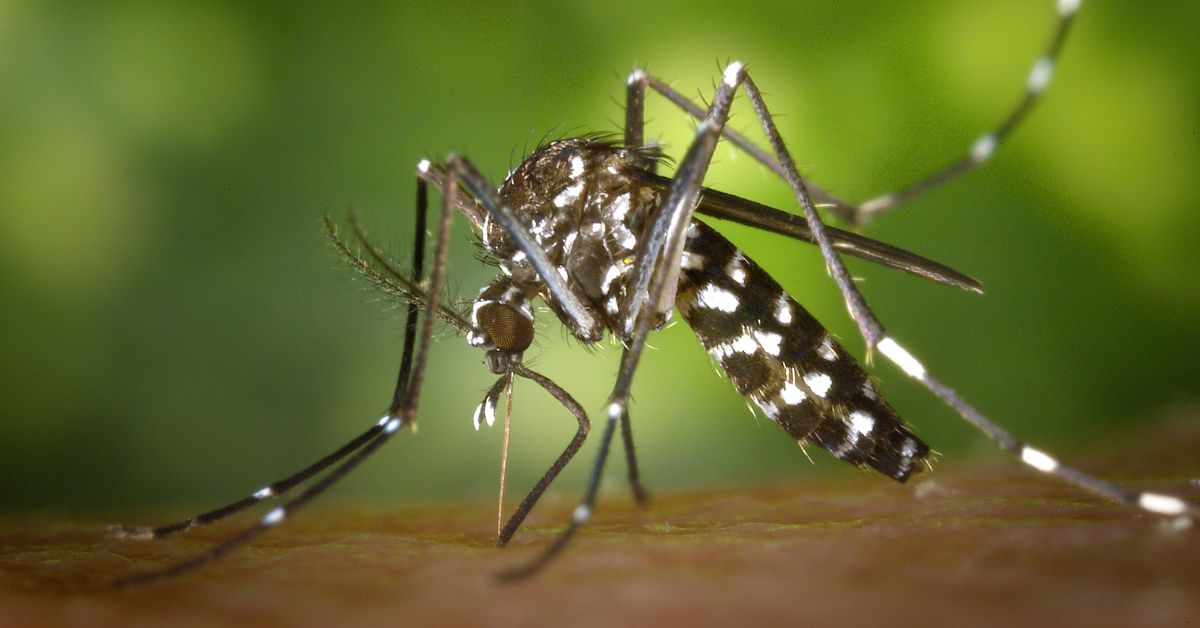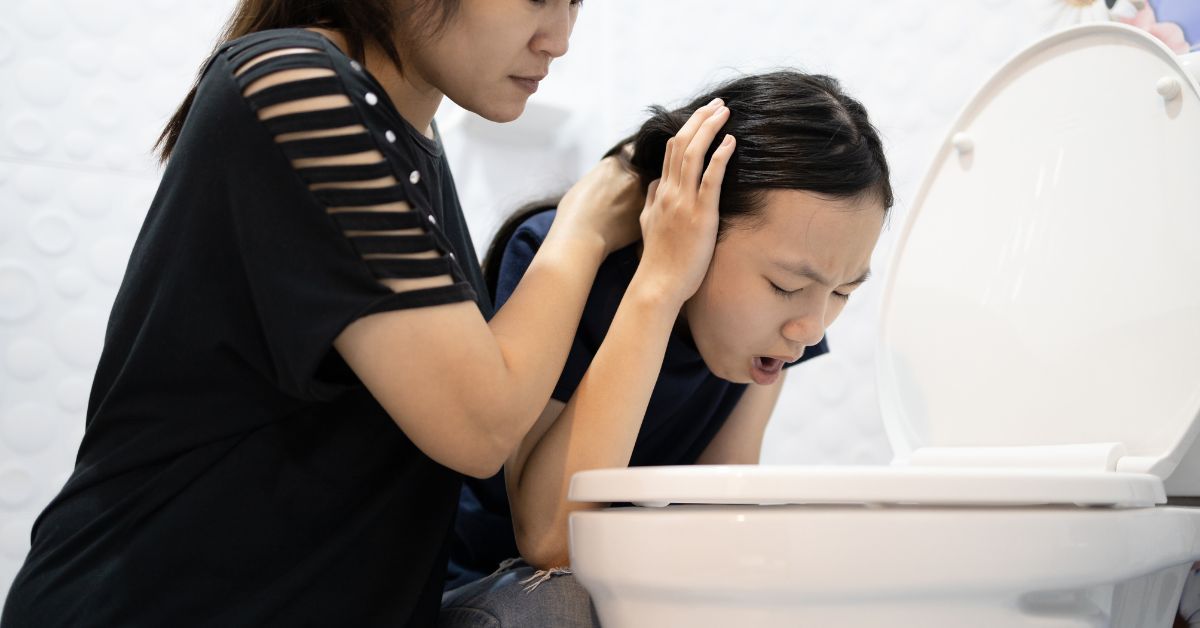Reducing fever in adults is a significant concern, as it often poses discomfort and inconvenience, although it is generally not as dangerous. What methods are effective and safe to quickly reduce fever in adults? Let’s explore them in this article!
What is Fever?
Before discussing ways to reduce fever in adults, it’s essential to understand what fever is. Fever is a condition characterized by an elevation in body temperature above the normal range of 37 degrees Celsius. The Centers for Disease Control and Prevention (CDC) defines fever in adults as a body temperature of 38 degrees Celsius or higher.
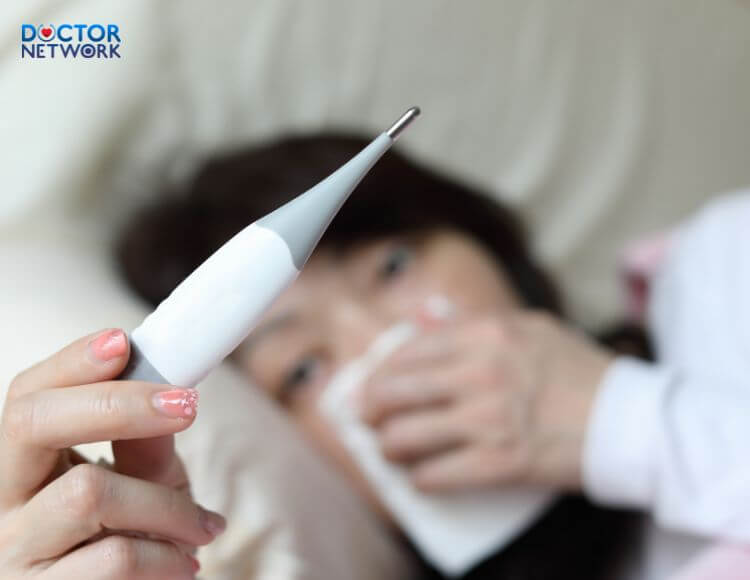
Fever in adults is a condition characterized by a body temperature of 38 degrees Celsius or higher
Fever is a common physiological response to infections such as bacteria, viruses, and other pathogens. Although it may be uncomfortable, fever is beneficial for the body’s health.
The severity and nature of each fever episode can vary based on factors such as the type of infectious agent, the individual’s overall health, immune status, and the presence of underlying chronic conditions. Monitoring body temperature regularly during a fever is crucial for timely detection and appropriate management, including seeking medical care if necessary.
Causes of Fever in Adults
The causes of fever in adults are diverse. This article focuses on some of the most common factors leading to fever:
1. Viral Fever
- Common symptoms include a runny nose, sore throat, cough, hoarseness, and muscle pain.
- Adequate rest, proper hydration, and the use of fever-reducing medications can alleviate these symptoms.

Cough and sore throat are characteristic symptoms of fever
2. Bacterial Infections
- Bacterial fever can affect various body parts and may involve the central nervous system, respiratory system (pneumonia or bronchitis), reproductive organs, digestive system, or skin.
- Prompt identification and treatment of bacterial infections are crucial to prevent spreading and facilitate recovery. Consultation with a doctor is essential if any signs of infection are present.
3. Drug-Induced Fever
- Fever can occur as a side effect of certain medications, especially antibiotics.
- If fever occurs after taking medication, it may indicate an allergic reaction. Seeking immediate medical attention to report symptoms is crucial for adjusting dosage or changing medication to ensure your health and safety.
Effective Ways to Reduce Fever in Adults
1. Use of Fever-Reducing Medications – way to reduce fever in adults
- Paracetamol is a commonly used fever-reducing medication, along with anti-inflammatory drugs like naproxen or ibuprofen.
- These medications provide quick relief, typically within 4 to 8 hours. However, if the fever persists above 39 degrees Celsius, it is advisable to consult a doctor for tailored advice and appropriate treatment.
2. Adequate Hydration – way to reduce fever in adults
- Fever can lead to rapid dehydration, making it essential to maintain proper fluid levels.
- Staying hydrated not only aids recovery from fever but also helps regulate body temperature. Adequate fluid intake is crucial during fever, especially when the body experiences increased water loss.
3. Ample Rest – way to reduce fever in adults
- Rest is vital for reducing stress on the body and enhancing its self-recovery capabilities.
- Quality sleep not only promotes rest but also boosts immune function, aiding the body in resisting harmful invaders. Adequate rest is a crucial aspect of coping with fever.
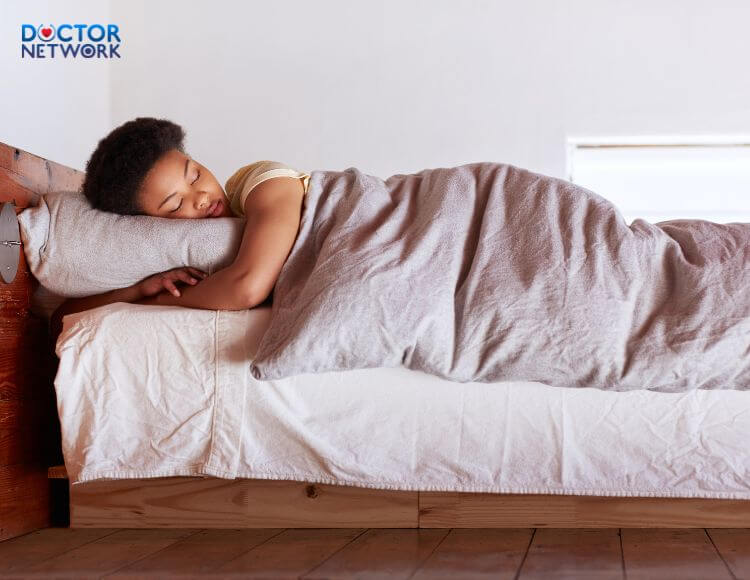
Rest not only helps reduce stress on the body but also enhances the ability for self-recovery
4. Warm Compress – way to reduce fever in adults
- Applying a warm compress to areas such as the armpits and groin can effectively reduce body temperature, especially in cases where external environmental factors contribute to increased body heat.
- Factors like physical activity, outdoor work in sunlight, particularly during midday and prolonged exposure, can raise body temperature. Using a warm compress in these areas can rapidly lower body temperature and effectively reduce fever.
5. Essential Oil Massage – way to reduce fever in adults
- Rubefacient properties in essential oils like peppermint and eucalyptus create a warm sensation, stimulating sweat production and helping the body dissipate heat.
- Massaging these oils on areas such as the back of the neck and the soles of the feet can be a natural and effective method for reducing fever in adults.
In conclusion, this article has introduced practical and effective methods to reduce fever in adults that are easily applicable at home. However, these suggestions are for reference purposes only. If fever persists despite attempting the mentioned measures, it is crucial to promptly consult a healthcare professional for a thorough evaluation, proper diagnosis, and tailored treatment. Seeking timely medical attention helps prevent unwanted complications associated with prolonged or severe fever and ensures addressing the root cause of the fever.
Kiểm Duyệt Nội Dung
More than 10 years of marketing communications experience in the medical and health field.
Successfully deployed marketing communication activities, content development and social networking channels for hospital partners, clinics, doctors and medical professionals across the country.
More than 6 years of experience in organizing and producing leading prestigious medical programs in Vietnam, in collaboration with Ho Chi Minh City Television (HTV). Typical programs include Nhật Ký Blouse Trắng, Bác Sĩ Nói Gì, Alo Bác Sĩ Nghe, Nhật Ký Hạnh Phúc, Vui Khỏe Cùng Con, Bác Sỹ Mẹ, v.v.
Comprehensive cooperation with hundreds of hospitals and clinics, thousands of doctors and medical experts to join hands in building a medical content and service platform on the Doctor Network application.

















